Higher classification Duttaphrynus | Rank Species | |
Scientific name Duttaphrynus melanostictus Similar Frog, Duttaphrynus, Amphibians, True toad, Toads | ||
Duttaphrynus melanostictus is commonly called Asian common toad, Asian toad, black-spectacled toad, common Sunda toad and Javanese toad. It is probably a complex of more than one toad species that is widely distributed in South and Southeast Asia.
Contents
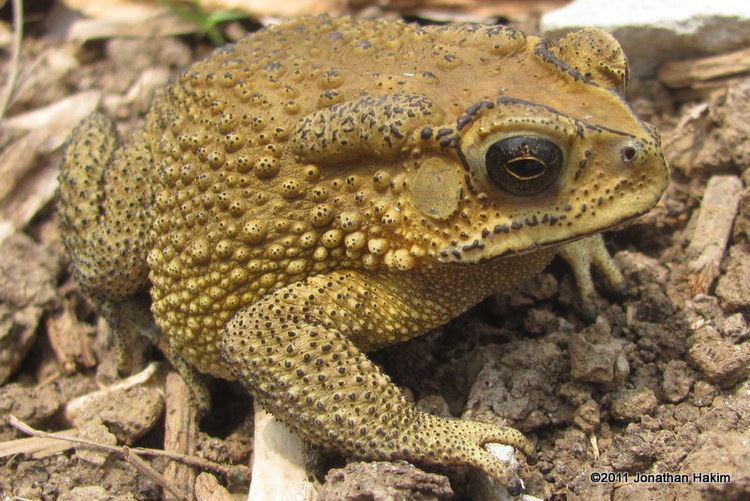
The species grows to about 20 cm (8 in) long. The species breeds during the monsoons and their tadpoles are black. Young toads may be seen in large numbers after the monsoons.
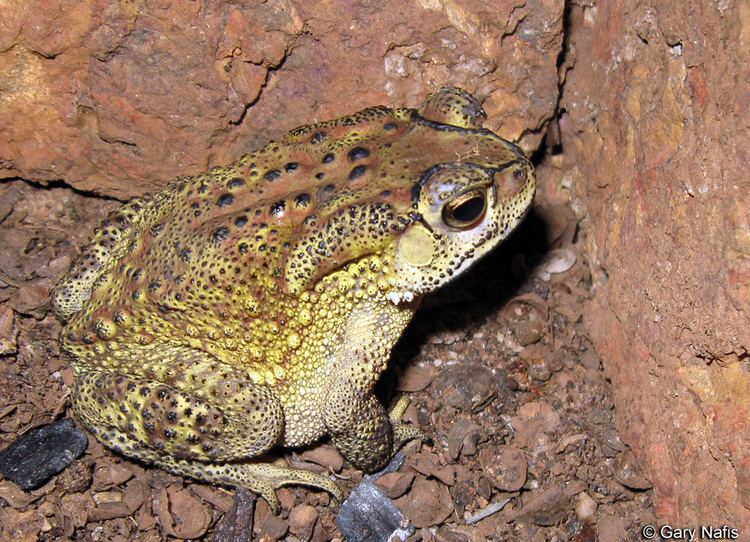
Characteristics
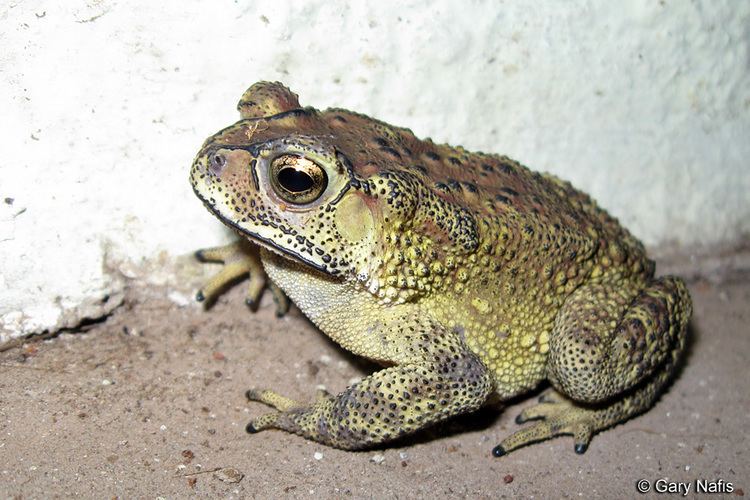
The top of the head has several bony ridges, along the edge of the snout (canthal ridge), in front of the eye (pre-orbital), above the eye (supra-orbital), behind the eye (post-orbital), and a short one between the eye and ear (orbito-tympanic); The snout is short and blunt and the space between the eyes is broader than the upper eyelid width. The ear drum or tympanum is very distinct and is at least as wide as two thirds the diameter of the eye. The first finger is often longer than the second and the toes at least half webbed. A warty tubercle is found just before the junction of the thigh and shank (sub-articular tubercle) and two moderate ones are on the shank (metatarsus). There is no skin fold along the tarsus. The "knee" (tarso-metatarsal articulation) reaches the tympanum or the eye when the hind leg is held parallel along the side of the body. The dorsal side is covered with spiny warts. The parotoids are prominent, kidney-shaped or elliptical and elongated. The dorsal side is yellowish or brownish and the spines and ridges are black. The underside is unmarked or spotted. Males have a subgular vocal sac and black pads on the inner fingers that help in holding the female during copulation.
Distribution and habitat

Asian common toads occur widely from northern Pakistan through Nepal, Bangladesh, India including the Andaman and Nicobar Islands, Sri Lanka, Myanmar, Thailand, Laos, Vietnam, Cambodia and southern China, Taiwan, Hong Kong and Macau to Malaysia, Singapore, and the Indonesian islands of Sumatra, Java, Borneo, Anambas and Natuna Islands. They have been recorded from sea level up to 1,800 m (5,900 ft) altitude, and live mostly in disturbed lowland habitats, from upper beaches and riverbanks to human-dominated agricultural and urban areas. They are uncommon in closed forests.
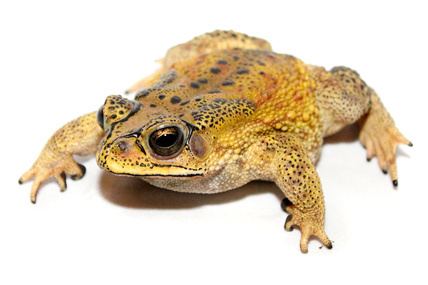
They were introduced to the Indonesian islands of Bali, Sulawesi, and Ambon and to (Indonesian) New Guinea at Manokwari on the Vogelkop Peninsula. The species is now common at Sentani in far eastern Papua Province. The species arrived in Madagascar in 2011 at the port of Toamasina and by 2014 was found in a 100 km2 zone around that city
Ecology and behaviour
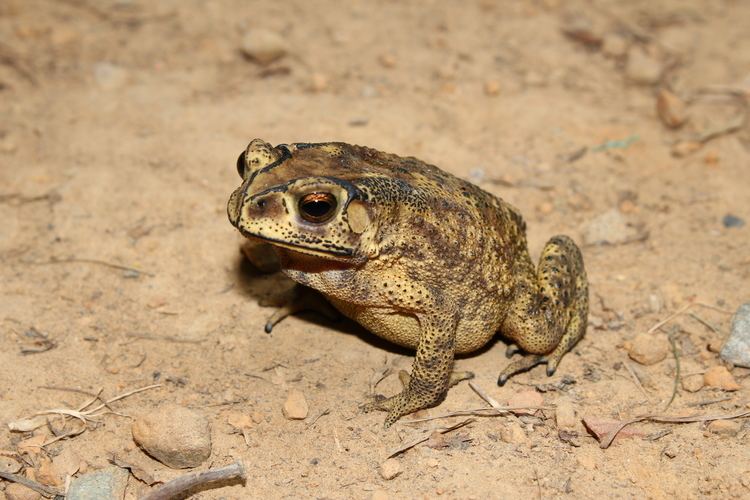
Asian common toads breed in still and slow-flowing rivers and temporary and permanent ponds and pools. Adults are terrestrial and may be found under ground cover such as rocks, leaf-litter, logs, and are also associated with human habitations. The larvae are found in still and slow-moving waterbodies. They are often seen at night under street lamps especially in times when winged termites swarm. They have been noted to feed on a wide range of invertebrates including scorpions. Tadpoles grown in sibling groups metamorphosed faster than those that were kept in mixed groups. Tadpoles have been shown to be able to recognize kin.
